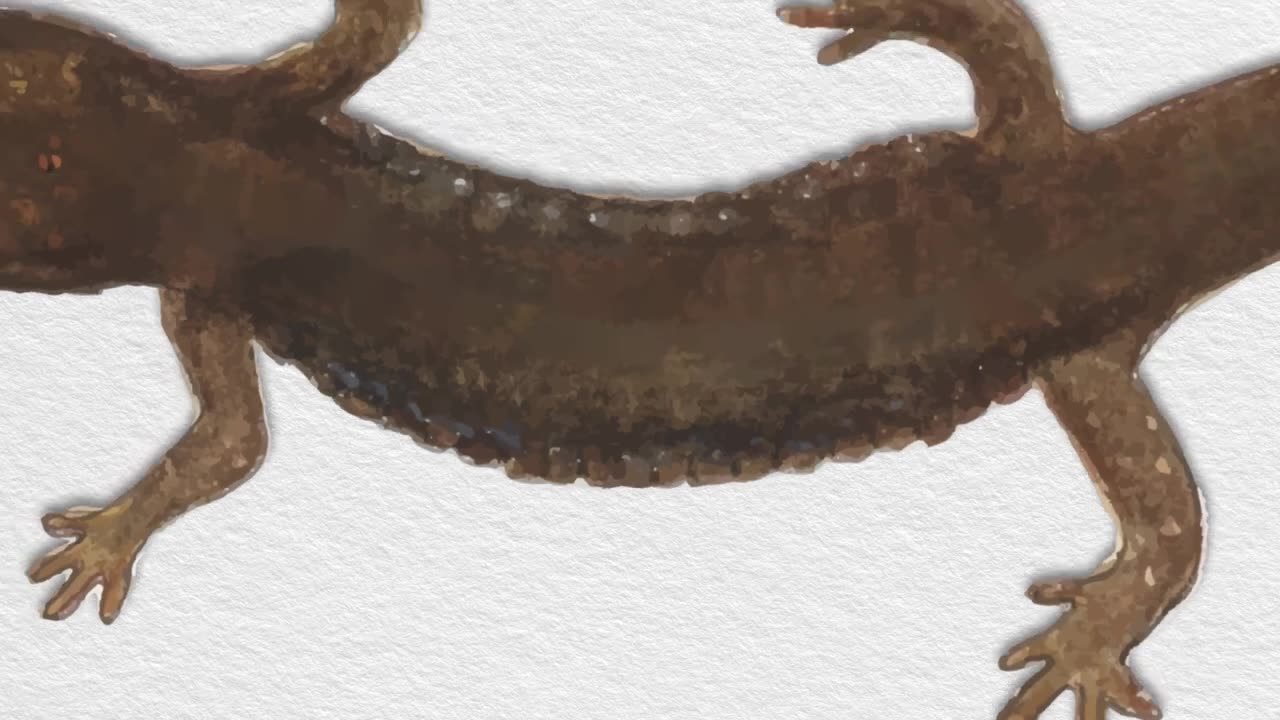Premium Only Content

Shenandoah Salamander - Part 1
The Shenandoah Salamander is a small amphibian endemic to the Shenandoah National Park in Virginia, USA. Known scientifically as Plethodon shenandoah, this species belongs to the lungless salamander family, which means they breathe through their skin. These creatures have a unique appearance, typically measuring around 3 to 4 inches in length, with a sleek, slender body and a distinctive coloration ranging from dark gray to brown with scattered spots of lighter shades.
Their habitat primarily consists of damp, wooded areas, often under rocks, logs, or leaf litter, where they find shelter and hunt for their prey, which mainly consists of small invertebrates like insects, spiders, and worms. Shenandoah Salamanders play a crucial role in the ecosystem by controlling insect populations and serving as indicators of environmental health due to their sensitivity to changes in habitat quality.
These salamanders face threats from habitat loss due to human development, climate change affecting their moist habitats, and potential disruptions to their environment caused by invasive species. Conservation efforts within the Shenandoah National Park and surrounding areas focus on preserving their habitats and monitoring population trends to ensure their continued survival.
Tags: Shenandoah Salamander, Plethodon shenandoah, amphibian, endemic species, conservation, habitat loss, Shenandoah National Park, lungless salamander, environmental indicator
-
 LIVE
LIVE
The Quartering
2 hours agoIdaho Shooter NAMED, Social media Scrubbed W/ Owen Shroyer!
14,989 watching -
 1:38:15
1:38:15
Russell Brand
2 hours agoGlastonbury Goes RADICAL - Police Probe 'Death to the IDF' Chant - SF605
168K15 -
 LIVE
LIVE
Dr Disrespect
3 hours ago🔴LIVE - DR DISRESPECT - IMPOSSIBLE WARZONE CHALLENGES
2,187 watching -
 1:32:42
1:32:42
Tucker Carlson
2 hours agoRFK Jr. Provides an Update on His Mission to End Skyrocketing Autism and Declassifying Kennedy Files
45.1K34 -
 DVR
DVR
Sean Unpaved
2 hours agoCode, Kill, Cash & Trades: Beasley Bets & NFL Trades
14K1 -
 LIVE
LIVE
RalliedLIVE
1 hour ago $1.21 earnedSHOTTY BOYS WARZONE CHALLENGES
327 watching -
 1:06:29
1:06:29
MTNTOUGH Podcast w/ Dustin Diefenderfer
4 hours agoJeremy Noble: What Army Rangers Do Every Day to Build Unbreakable Mental Toughness | MTNPOD #122
4.96K -
 LIVE
LIVE
SternAmerican
1 day agoElection Integrity Call – Monday, June 30 at 2 PM EST | Hosted by Steve Stern & Raj Doraisamy
162 watching -
 1:04:25
1:04:25
Timcast
2 hours agoDemocrat Zohran Mamdani Calls For TAXING WHITE PEOPLE, Media Says HES NOT Communist
207K68 -
 LIVE
LIVE
Nerdrotic
17 hours ago $4.59 earnedTemu WWIII Canceled Pride Month, but Not Ironheart - Nerdrotic Nooner 497
694 watching